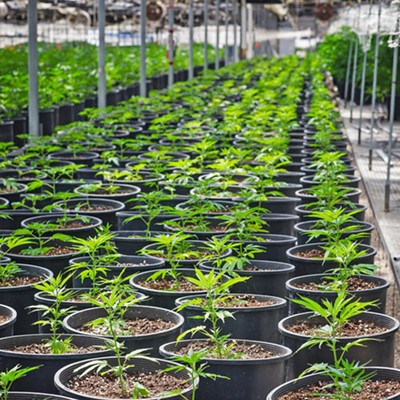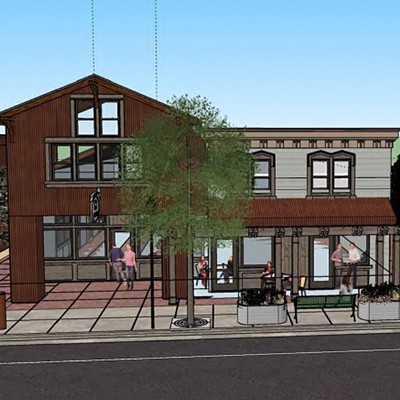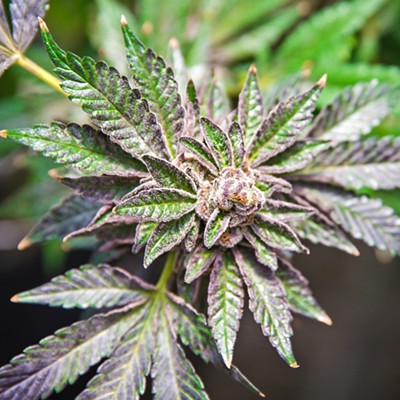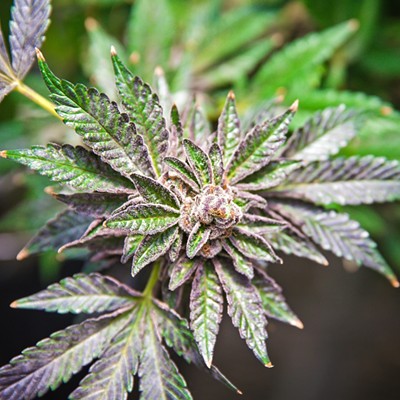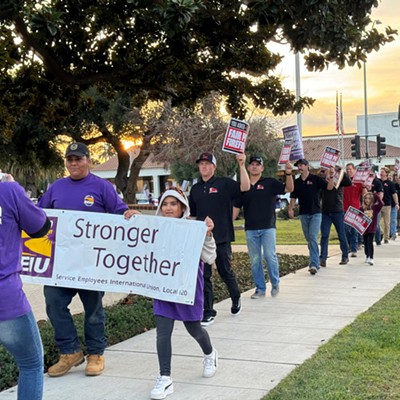Less than two months into the new year, the Santa Barbara County Planning Commission has already had numerous discussions over possible amendments to the county’s cannabis ordinance.
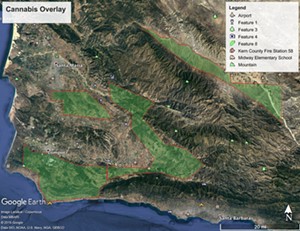
The county Board of Supervisors directed the commission to look at potential changes to existing regulations last year to address concerns over odor and the plant’s compatibility with other crops. So far these conversations have meandered without nailing down specific changes to move forward, but commissioners discussed a more concrete proposal during its Feb. 5 meeting.
Commissioner John Parke—who represents the county’s 3rd District, which includes the Santa Ynez Valley—discussed his idea for creating a cannabis overlay for the inland portion of the county. Parke presented a map with identified sections of the county where the process for obtaining a permit to grow cannabis would be simple and straightforward. Under this proposal, farmers would have to meet more stringent guidelines to obtain a permit to grow cannabis outside of this overlay.
“If you are outside one of these overlays, you could still take a shot at it,” Parke said. “It’d take a major [conditional use permit], might be subject to a durational limit, and … I’m going to hold you to a much higher standard because you could go to one of these overlay areas instead.”
The map Parke presented included different segments of the county that aren’t near existing agriculture—including row crops and vineyards—as well as homes. Parke warned the public to not look too closely at the boundary lines of his proposed overlay, and that it’s just a rough approximation. Parke’s map includes an area in the Cuyama Valley, an area near Lake Cachuma, an area south of Lompoc, and an area south of Santa Maria.
Parke said encouraging farmers to grow cannabis in specific areas of the county, away from other agriculture industries, could solve many of the issues some people have raised over cannabis projects at different appeal hearings.
One of the major complaints some members of the wine industry have raised is the inability to sell grapes that are grown near cannabis because of a fear that terpenes—organic compounds released from the plant—could change the taste of the wine produced. Although a cannabis project applicant funded a study that downplays these concerns.
“We are hearing from a number of wine growers that they literally can’t sell their grapes; there’s not a market if they’re next to cannabis,” Parke said. “Sometimes the perception issue is more important than the science.”
Parke added that he’d like to see the overlay apply to cannabis project applicants who have already submitted an application but are still navigating the permit process. Most of Parke’s fellow commissioners expressed support for an overlay.
Dan Klemann, deputy director of the county’s Long Range Planning Division, said the commission plans to continue this conversation on possible cannabis regulation changes on March 4. At that meeting, planning staff will bring back the main points the commission has discussed so far this year and nail down specific amendments that staff can begin researching and drafting.


